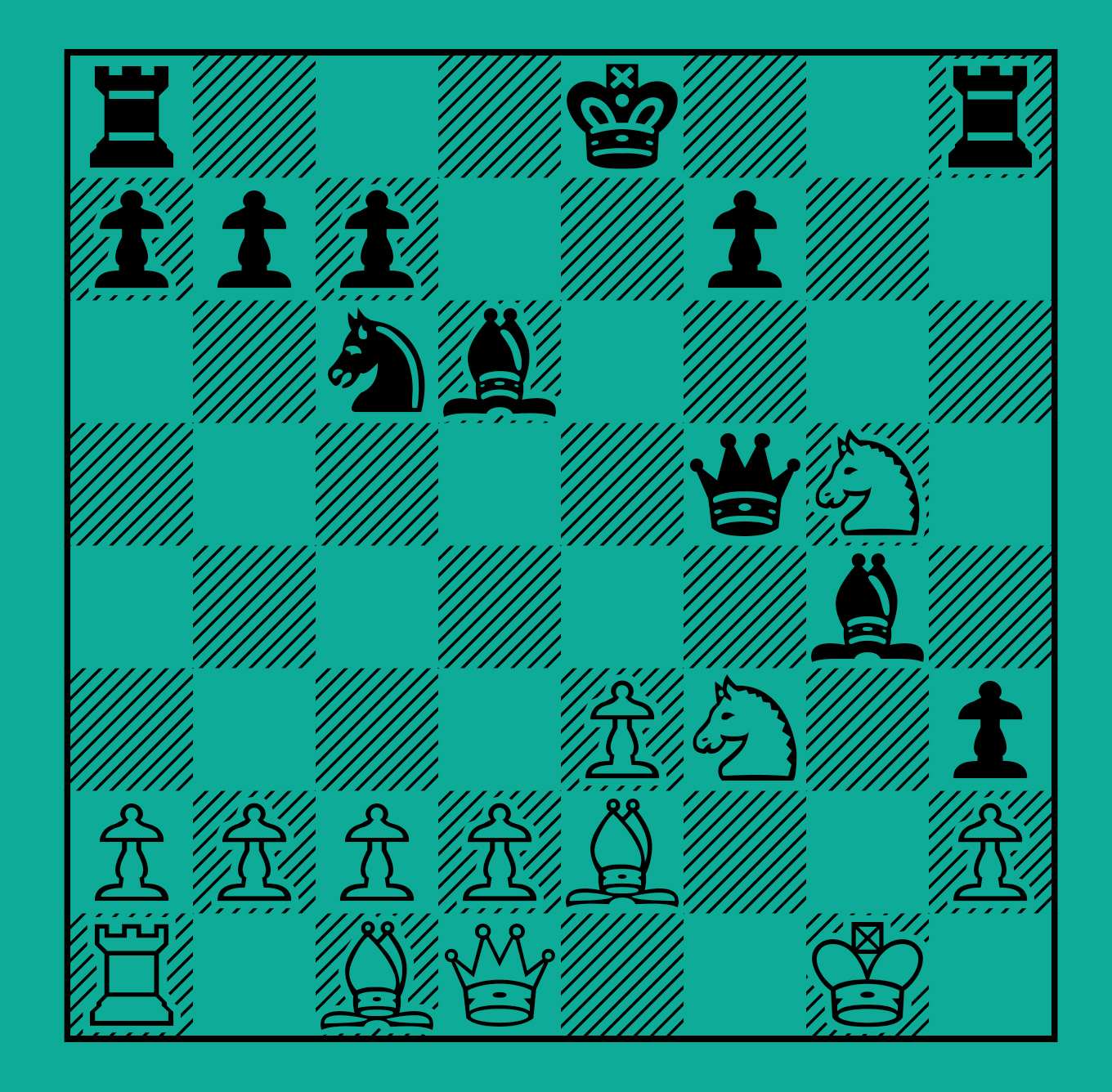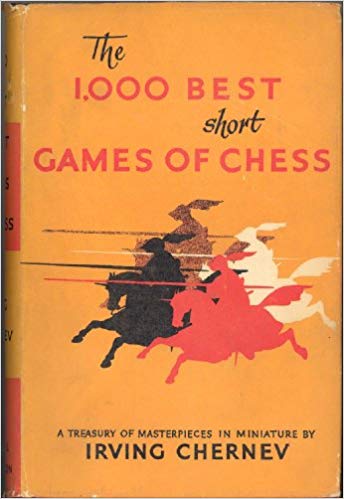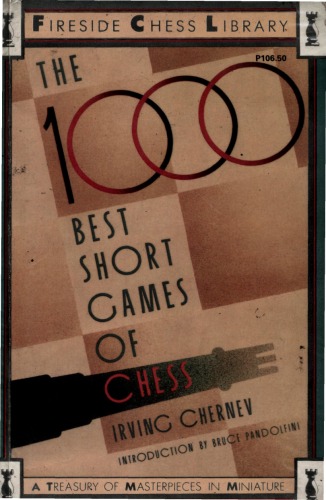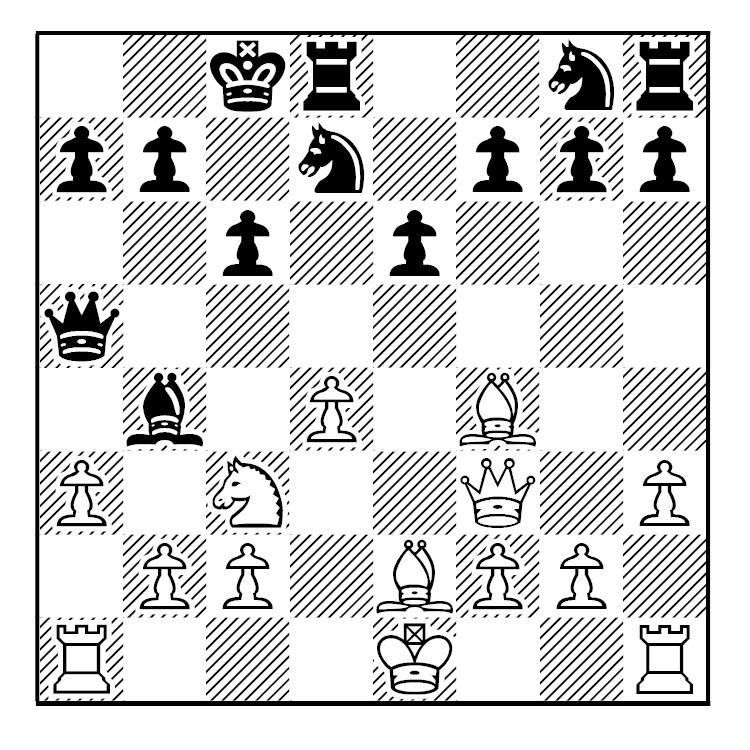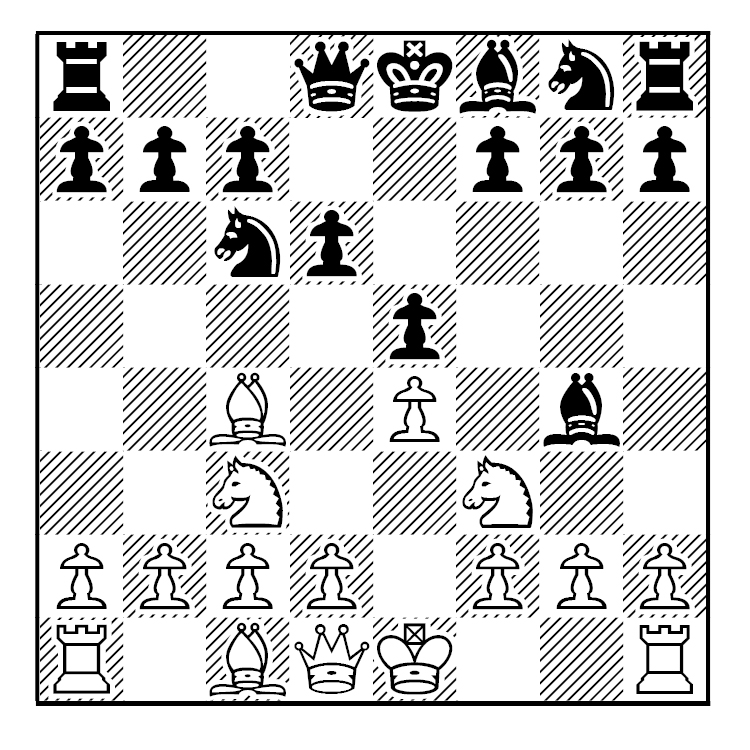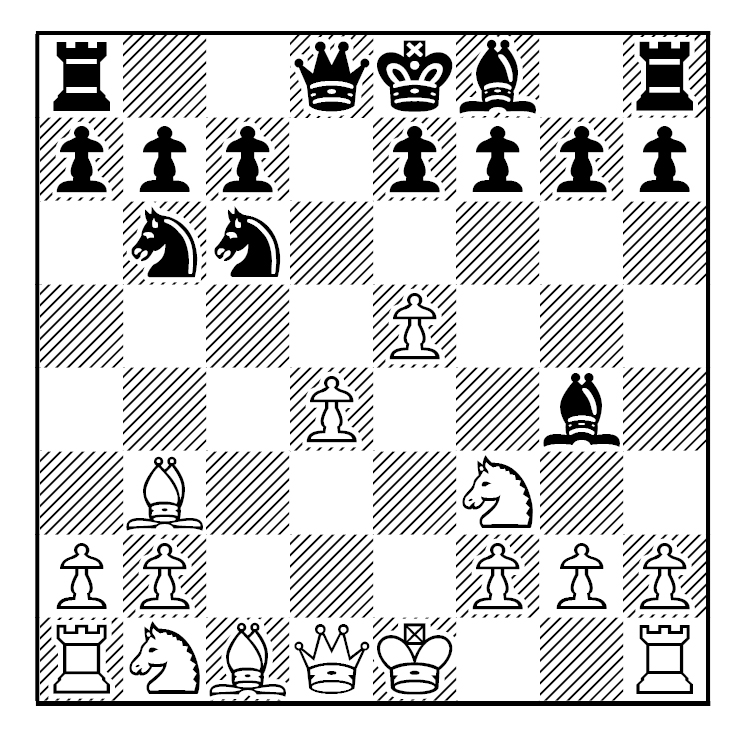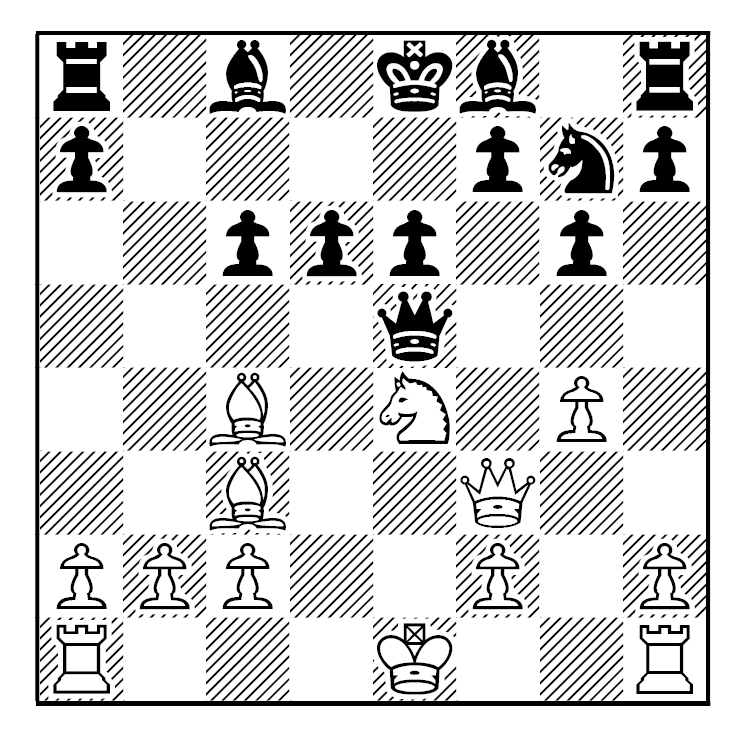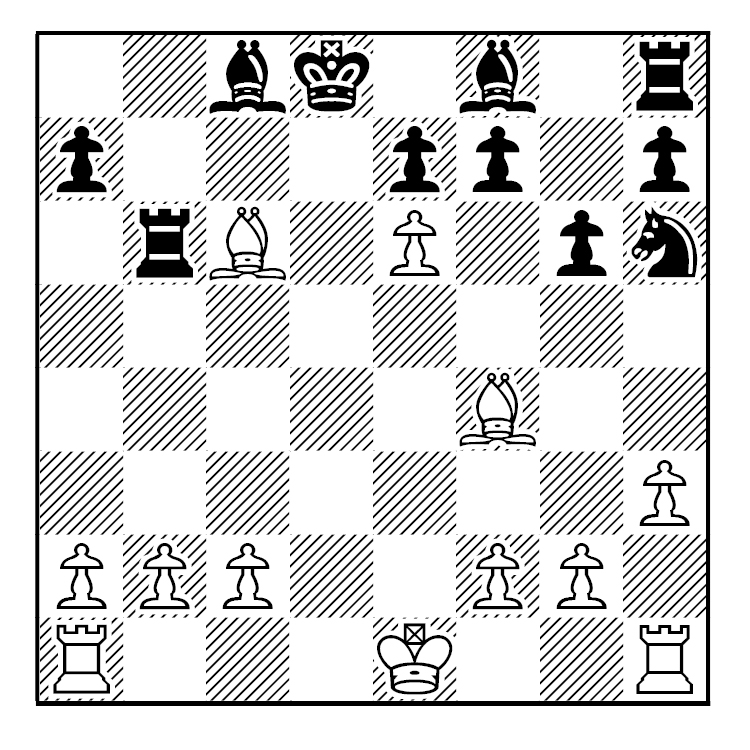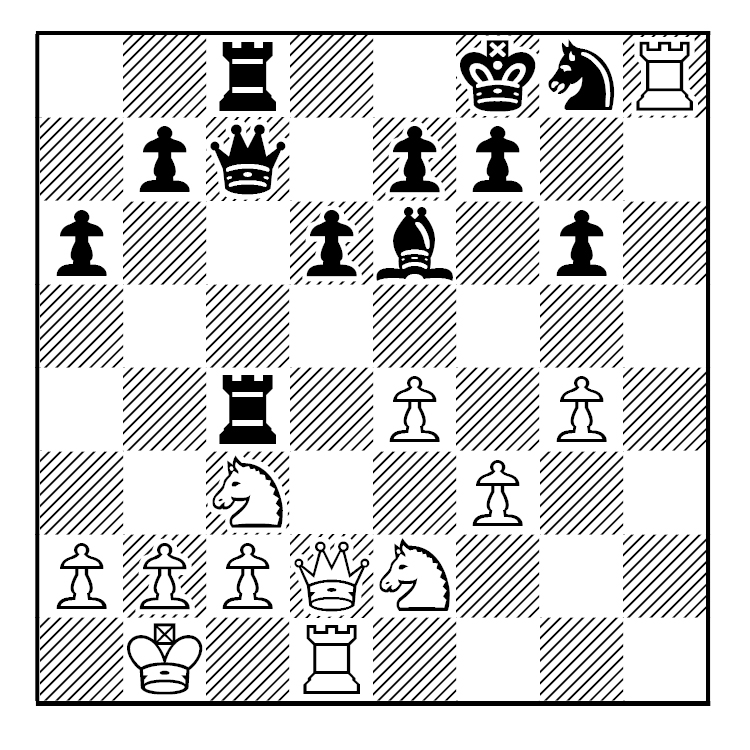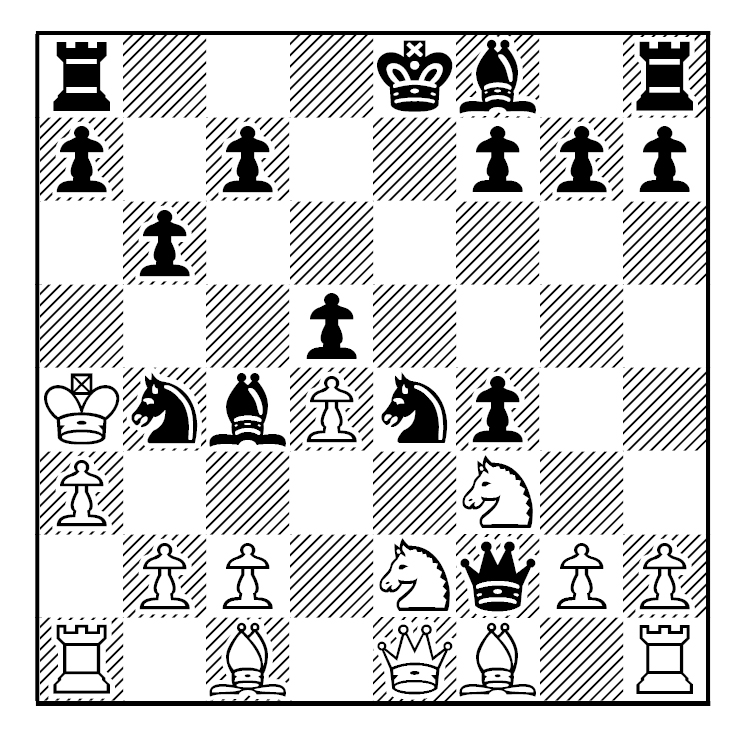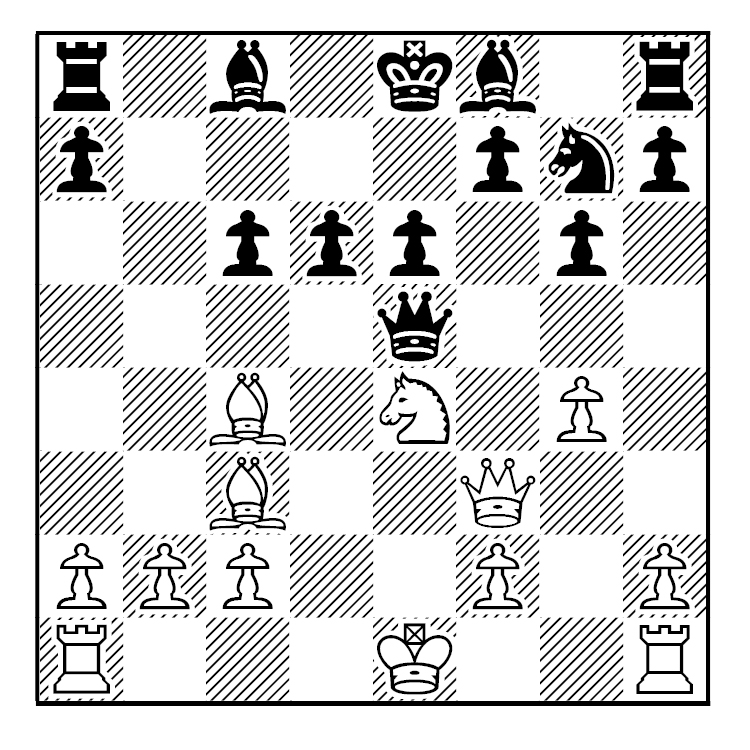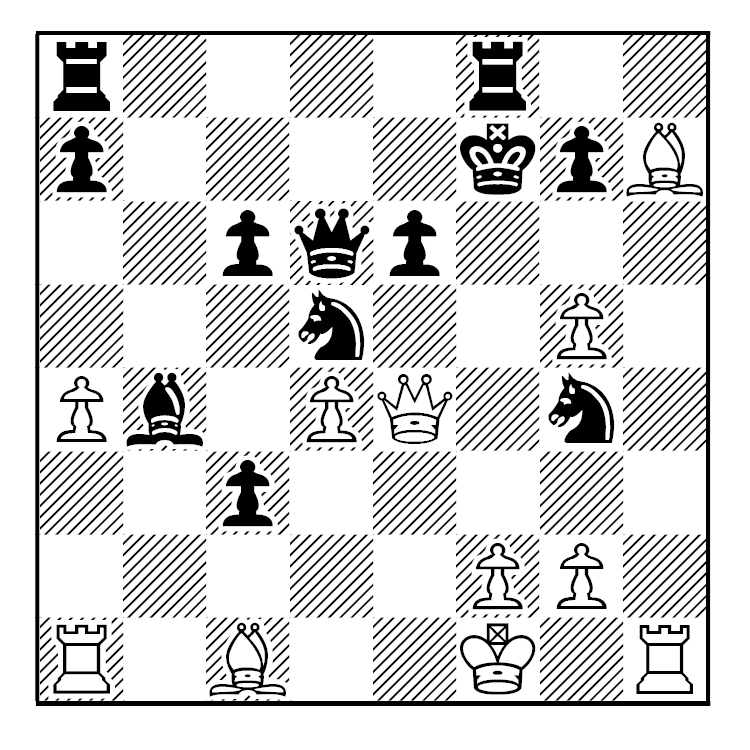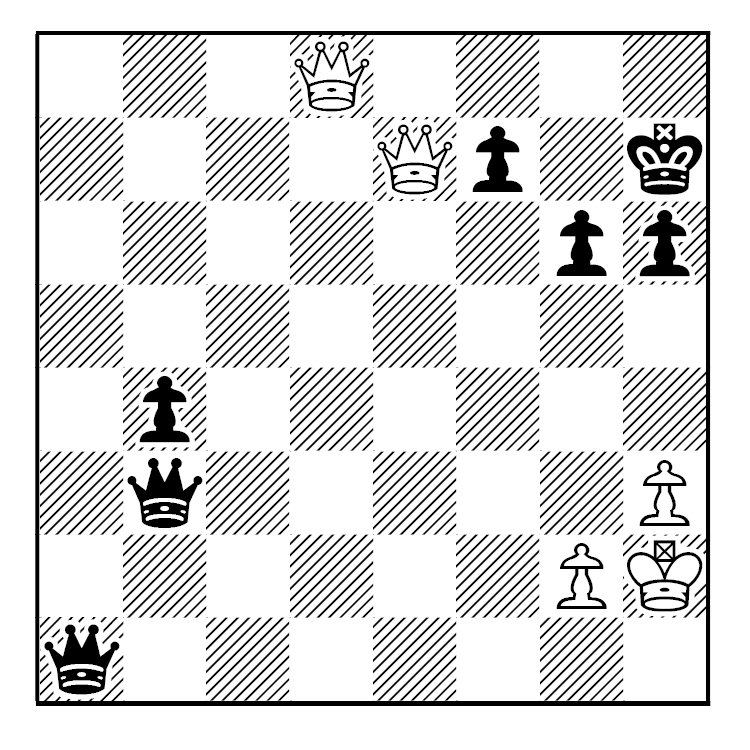I’ve entered another Najdorf thematic tournament. This is a good way to (really) learn an opening.
There are many approaches to learning an opening. One can consult an expert in the variation (but illegal once the games begin). Another approach is to gather up the books, a board, pens, paper, and some highlighters.
My favorite approach to play over some miniatures and learn some tactics and ways to take down an opponent quickly. It saves time on studying. Extra time to take down other opponents. Plus, it’s fun!
Here are some Najdorf miniatures.
They are breathtaking in their elegance, clarity, and forcefulness. And they all begin with the moves 1.e4 c5 2.Nf3 d6 3.d4 cxd4 4.Nxd4 Nf6 5.Nc3 a6.
To warm up the tactic monster in you we’ll start with some games that are not exactly main line.
Markus Loeffler (2426)-J. Ramseier
Ticino Open
Mendrisio, Oct. 30 1999
1.e4 c5 2.Nf3 d6 3.d4 cxd4 4.Nxd4 Nf6 5.Nc3 a6 6.Qf3!? (Not exactly book, but White is trying to lay claim to some key squares.) 6…Qc7 7.Bg5 Nbd7 8.O-O-O b5 9.Nd5 Qa5 10.Nc6 1-0
GM Onischuk (2581)-IM Bajarani (2417)
Voronezh Master Open
Russia, June 14 2013
1.e4 c5 2.Nf3 d6 3.d4 cxd4 4.Nxd4 Nf6 5.Nc3 a6 6.Nb3!? g6 7.Be2 Bg7 8.O-O O-O 9.Re1 Nbd7 10.a4 b6 11.Be3 Bb7 12.f3 Qc7 13.Qd2 Rfe8 14.Red1 Rac8 15.Bf1 Nc5 16.Qf2 Nfd7 17.Nd4 Qb8 18.Rd2 Ne5 1-0
GM David Anton Guijarro (2631)-GM Hao Wang (2729)
FIDE World Blitz Ch.
Dubai, June 19 2014
1.e4 c5 2.Nf3 d6 3.d4 cxd4 4.Nxd4 Nf6 5.Nc3 a6 6.Qd3!? Nbd7 7.Be2 Nc5 8.Qe3 e6 9.Bd2 Be7 10.g4 d5 11.exd5 exd5? 12.O-O-O O-O 13.f3 Bd7 14.g5 Nh5? 15.f4 g6 16.Bxh5 gxh5 17.Nxd5 Re8 18.Bc3 Bg4 19.Nf5! Bxf5 20.Qe5 f6 21.Qxf5 Qc8 22.Nxf6+ 1-0
6.Rg1 is relatively unexplored and rare in OTB tournaments. Just perfect for correspondence play!
M. Mahjoob (2510)-R. Kalugampitiya (2135)
Tata Steel Team Ch.
Kolkata, India, Dec. 27 2009
1.e4 c5 2.Nf3 d6 3.d4 cxd4 4.Nxd4 Nf6 5.Nc3 a6 6.Rg1!? (White takes command of the g-file, important in many variations of the Najdorf.) 6…b5 7.g4 Bb7 8.g5 Nxe4 9.Nxe4 Bxe4 10.Qg4 Bb7 11.Bg2 Bxg2 12.Qxg2 Nd7

13.g6! e6 (Black can’t take the pawn due to 13…hxg6 14.Ne6! fxe6 15.Qxg6#. If instead Black moves his queen, then White wins material. I’ll you figure it out.) 14.gxf7+ Kxf7 15.Bg5 Qc8 16.O-O-O Ra7 17.Nxe6 1-0
Here are two more games with the interesting 6.Rg1!?.
Luis Esquivel (2212)-Neuris Delgado (2254)
G. Garcia Memorial
Santa Clara, Cuba, June 2 2004
1.e4 c5 2.Nf3 d6 3.d4 cxd4 4.Nxd4 Nf6 5.Nc3 a6 6.Rg1 e5 (A common reply to 6.Rg1.) 7.Nb3 h5 8.Bg5 Be6 9.Qd2 Nbd7 10.O-O-O Rc8 11.f4 Be7 12.f5 Bc4 13.Bxc4 Rxc4 14.Qd3 b5 15.Rge1 Qc8 16.Bxf6 Nxf6 17.Re2 Qc7 18.Nd5 Nxd5 19.Qxd5 O-O 20.f6 Bxf6 21.Qxd6 Bg5+ (22.Kb1 Rd8 23.Qxc7 Rxd1+ 24.Nc1 Rxc1#.) 0-1
Wojciech Moranda (2451)-Roman Nechepurenko (2431)
European Jr. Ch.
Herceg Novi, Sept. 2005
1.e4 c5 2.Nf3 d6 3.d4 cxd4 4.Nxd4 Nf6 5.Nc3 a6 6.Rg1 e5 7.Nb3 b5 8.g4 Bb7 9.Bg2 b4 10.Nd5 Nxd5 11.exd5 Be7 12.a3 bxa3 13.Rxa3 a5 14.Ra4 Nd7 15.Bd2 Nb6 16.Bxa5 Qc8 17.Ra2 O-O 18.Nc1 Nc4 19.Bc3 Rxa2 20.Nxa2 Qc5 21.Be4 Bh4 22.Qe2 Ra8 23.b3 Rxa2 24.bxc4 Ra3 (White faces the embarrassing 25.Bb2 Re3! -+) 0-1
The move 6.a4 leads to a slower game. But one can lose the game just as quickly.
Karasov-Korsunsky
Sevastopol, 1978
1.e4 c5 2.Nf3 d6 3.d4 cxd4 4.Nxd4 Nf6 5.Nc3 a6 6.a4 e6 7.a5 b5 8.axb6 Qxb6 9.Be3 Ng4 10.Qxg4 Qxb2 11.Bb5 Nd7 12.Kd2 axb5 13.Rxa8 Ne5 14.Qe2 Nc4 15.Qxc4 bxc4 16.Rxc8 Kd7 17.Ra8 1-0
Balashov-Sunye Neto
Wijk aan Zee, 1982
1.e4 c5 2.Nf3 d6 3.d4 cxd4 4.Nxd4 Nf6 5.Nc3 a6 6.a4 e5 7.Nf3 h6 8.Bc4 Qc7 9.Bb3 Be6 10.O-O Nbd7 11.Nh4 g5 12.Nf5 Nc5 13.Ne3 Nxb3 14.cxb3 Rd8 15.Bd2 Bg7 16.Rc1 Qb8 17.Ncd5 Nxd5 18.exd5 Bd7 19.h4 Bf6 20.Qf3 Ke7 21.Bb4 b5 22.Rc6 1-0
The move 6.Be3 is an interesting combination of tactics and strategy. It’s played by many Grandmasters. Let’s take a close look.
Perenyi-Lengyel, 1983
1.e4 c5 2.Nf3 d6 3.d4 cxd4 4.Nxd4 Nf6 5.Nc3 a6 6.Be3 b5 7.a4 bxa4 8.Rxa4 e6 9.Bb5+ Nfd7 10.O-O Bb7 11.Bc4 Nc5 12.Rb4 Qc8 13.f4 Be7 14.f5 e5 15.f6 exd4 16.fxg7 Rg8 17.Bxf7+ Kd7 18.Rxb7+! 1-0
Nicolau (2290)-Nowarra
Subotica, Yugoslavia, 1967
1.e4 c5 2.Nf3 d6 3.d4 cxd4 4.Nxd4 Nf6 5.Nc3 a6 6.Be3 e6 7.Qf3 Nbd7 8.O-O-O Qc7 9.Be2 Ne5 10.Qg3 b5 11.f4 Nc4 12.e5 dxe5 13.fxe5 Nxe3 14.Qxe3 Nd7 15.Rhf1 Nxe5 16.Ncxb5 axb5 17.Bxb5+ Bd7 18.Bxd7+ Nxd7 19.Qf3 Nb6 20.Nb5 1-0
IM J. Peters (2572)-O. Maldonado (2275)
American Open
Los Angeles, Nov. 1995
1.e4 c5 2.Nf3 Nc6 3.d4 cxd4 4.Nxd4 Nf6 5.Nc3 d6 6.Be2 e6 7.Be3 Be7 8.Qd2 a6 9.O-O-O Qc7 10.f4 O-O 11.Rhg1 Re8 12.g4 Nd7 (Jack Peters suggested 12…Nxd4 13.Bxd4 e5.) 13.g5 Rb8 14.h4 b5 15.h5 b4
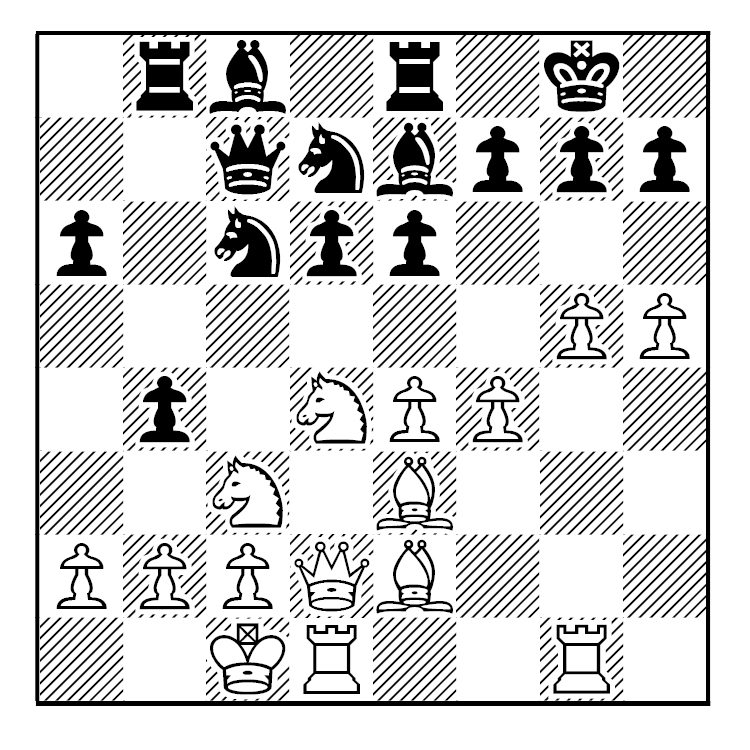
16.g6! (Again, the move g6. Maybe there is something to attacking with one’s own g-pawn.) 16…Nc5 17.gxf7+ Kxf7 18.Nf5! exf5 19.Bc4+ Kf8 20.Bxc5 Na5 21.Qd5 1-0
White can try to include a Keres Attack (an early g4) plan with Be3. But that idea seems risky.
GM Shirov (2746)-GM Van Wely (2643)
Istanbul Ol
Turkey, 2000
1.e4 c5 2.Nf3 d6 3.d4 cxd4 4.Nxd4 Nf6 5.Nc3 a6 6.Be3 e6 7.g4 e5 8.Nf5 g6 9.g5 gxf5 10.exf5 d5 11.Qf3 d4 12.O-O-O Nbd7 13.Bd2 Qc7 14.gxf6 dxc3 15.Bxc3 Qc6 16.Qg3 Qxh1 17.Bg2 Bh6+ 18.Bd2 Bxd2+ 19.Kxd2 Qxg2 20.Qxg2 a5 21.f4 exf4 22.Qg7 Rf8 23.Re1+ Kd8 24.Re7 Kc7 25.Qxf8 1-0
GM Alexander Onischuk (2660)-GM Bologan (2668)
Poikovskii International
Russia, 2001
1.e4 c5 2.Nf3 d6 3.d4 cxd4 4.Nxd4 Nf6 5.Nc3 a6 6.Be3 e6 7.g4 e5 8.Nf5 g6 9.g5 gxf5 10.exf5 d5 11.Qf3 d4 12.O-O-O Nbd7 13.Bd2 Bd6 14.Bc4 Qc7 15.Bb3 dxc3 16.Bxc3 e4 17.Rhe1 Be5 18.Rxe4 Nxe4 19.Qxe4 O-O 20.Rxd7 Bf4+ 0-1
Shapiro (2251)-Mirabile (2202)
National Chess Congress
Philadelphia, Nov. 27 2005
1.e4 c5 2.Nf3 d6 3.d4 cxd4 4.Nxd4 Nf6 5.Nc3 a6 6.Be3 e6 7.g4 e5 8.Nf5 g6 9.g5 gxf5 10.exf5 d5 11.Qf3 d4 12.O-O-O Nbd7 13.Bd2 dxc3 14.Bxc3 Qc7 15.gxf6 Nxf6 16.Bd3 Bh6+ 17.Kb1 Bf4 18.Rde1 Qe7 19.Qxf4 1-0
I do not know what is the best response to the Keres. But I do know that …h6 is perhaps not the best response.
Horvath (2350)-Schinzel (2385)
Baden, 1980
1.e4 c5 2.Nf3 d6 3.d4 cxd4 4.Nxd4 Nf6 5.Nc3 a6 6.Be3 e6 7.g4 h6 8.Qf3 Nc6 9.Rg1 Ne5 10.Qh3 Nexg4 11.Rxg4 e5 12.Nf5 g6 13.Rh4 gxf5 14.exf5 d5 15.O-O-O d4 16.f4 Qa5 17.fxe5 dxc3 18.exf6 Qxa2 19.Re4+ Be6 20.Rxe6+ 1-0
GM Svidler-GM Topalov
Elista, 1998
1.e4 c5 2.Nf3 d6 3.d4 cxd4 4.Nxd4 Nf6 5.Nc3 a6 6.Be3 e6 7.g4 h6 8.f4 e5 9.Nf5 h5 10.Nd5 Nxd5 11.Qxd5 g6 12.O-O-O gxf5 13.exf5 Nc6 14.Bc4 Qf6 15.fxe5 Nxe5 16.g5 Qxf5 17.Bb3 Qf3 18.Qd2 Qc6 19.Rhf1 Be6 20.Bxe6 fxe6 21.Rf6 O-O-O 22.Rxe6 Bg7 1-0
R. Sullivan-D. Dimit
corres., prison game, 2003
1.e4 c5 2.Nf3 d6 3.d4 cxd4 4.Nxd4 Nf6 5.Nc3 a6 6.Be3 e6 7.g4 h6 8.f4 b5 9.Bg2 Bb7 10.g5 hxg5 11.fxg5 b4 12.Na4 Nxe4 13.Qg4 d5 14.Bxe4 dxe4 15.O-O-O Bd5 16.Nxe6 TN fxe6 17.Nb6 Nd7 18.Nxd5 exd5 19.Qe6+ Be7?! 20.Qg6+ +- Kf8 21.Rhf1+ 1-0
Let’s jump a little ahead.
The most common response to the Najdorf is 6.Bg5. It leads to fascinating combinations with many ideas. I know I will face it at least once in the tournament.
Book-Naegili
Munich Ol., 1936
1.e4 c5 2.Nf3 d6 3.d4 cxd4 4.Nxd4 Nf6 5.Nc3 a6 6.Bg5 e6 7.Qd2 Be7 8.O-O-O Qc7 9.f4 b5 10.e5 dxe5 11.Bxb5+ axb5 12.Ndxb5 Qb6 13.fxe5 Rxa2 14.Kb1
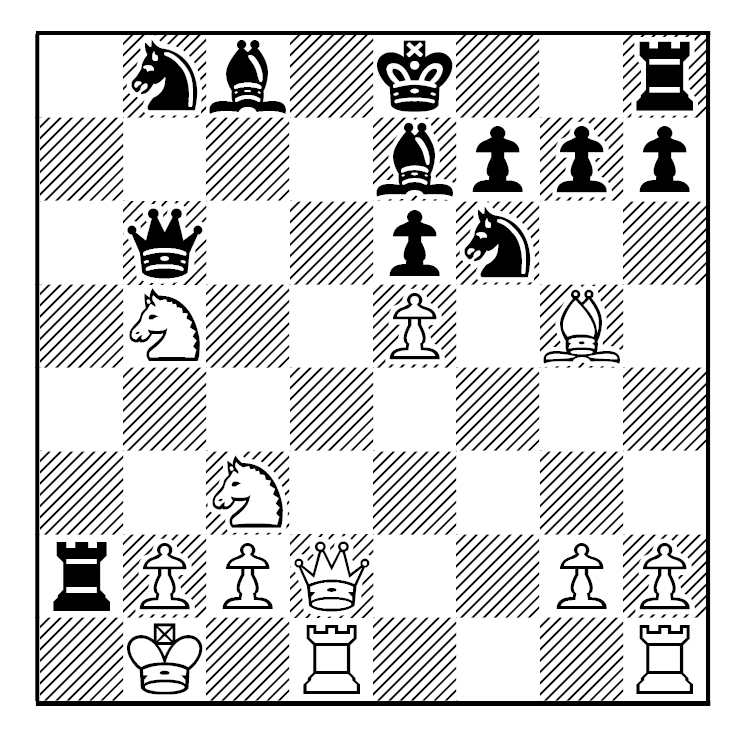
14…Ne4! 15.Nxe4 Rxb2+! 16.Kxb2 Qxb5+ 0-1
Matov-GM Fischer
Vinkovci, 1968
1.e4 c5 2.Nf3 d6 3.d4 cxd4 4.Nxd4 Nf6 5.Nc3 a6 6.Bg5 e6 7.f4 Be7 8.Be2 Qb6 9.Qd2 Qxb2 10.Rb1 Qa3 11.O-O Nbd7 12.f5 Ne5 13.Kh1 O-O 14.Rb3 Qc5 15.Bxf6 Bxf6 16.Na4 Nc4 17.Qf4 Qxd4 18.Rd3 Qe5 19.Qg4 exf5 20.exf5 Ne3 0-1
Svensson (2386)-J. Zimmermann (2327)
Spiltan Fonder IM
Gothenburg, Sweden, Aug. 15 2007
1.e4 c5 2.Nf3 d6 3.d4 cxd4 4.Nxd4 Nf6 5.Nc3 a6 6.Bg5 e6 7.f4 Qb6 8.Qd2 Be7 9.e5 Ng8 10.exd6 Qxd6 11.Bxe7 Qxe7 12.O-O-O Bd7 13.g3 Nc6 14.Bg2 O-O-O 15.Bxc6 bxc6 16.Rhe1 Nh6 17.Qd3 Kb7 18.Qc4 c5 19.Nb3 Ka7 20.Re5 Nf5 21.Rxc5 Rc8 22.g4 1-0
Vitolins-Anetbayev
USSR, 1975
1.e4 c5 2.Nf3 d6 3.d4 cxd4 4.Nxd4 Nf6 5.Nc3 a6 6.Bg5 e6 7.f4 Be7 8.Qf3 Qc7 9.O-O-O Nbd7 10.Qg3 b5 11.Bxb5 axb5 12.Ndxb5 Qb8 13.e5 dxe5 14.fxe5 Nxe5 15.Rhe1 Nc4 16.Qc7! +- Nd5 17.Rxd5 O-O 18.Bxe7 1-0
Wedberg-Bernard
Sweden, 1983
1.e4 c5 2.Nf3 d6 3.d4 cxd4 4.Nxd4 Nf6 5.Nc3 a6 6.Bg5 e6 7.f4 Be7 8.Qf3 h6 9.Bh4 Qc7 10.O-O-O Nbd7 11.Be2 Rb8 12.Qg3 O-O 13.Rhf1 Nb6?! (This move seems too slow.) 14.Kb1 Bd7 15.Qe1 Na4 16.Nxa4 Bxa4 17.Bd3 Bd7 18.g4 Nxg4 19.Rg1 Nf6 20.e5 dxe5 21.fxe5 Nd5 22.Qg3 g5 23.Bxg5! Bxg5
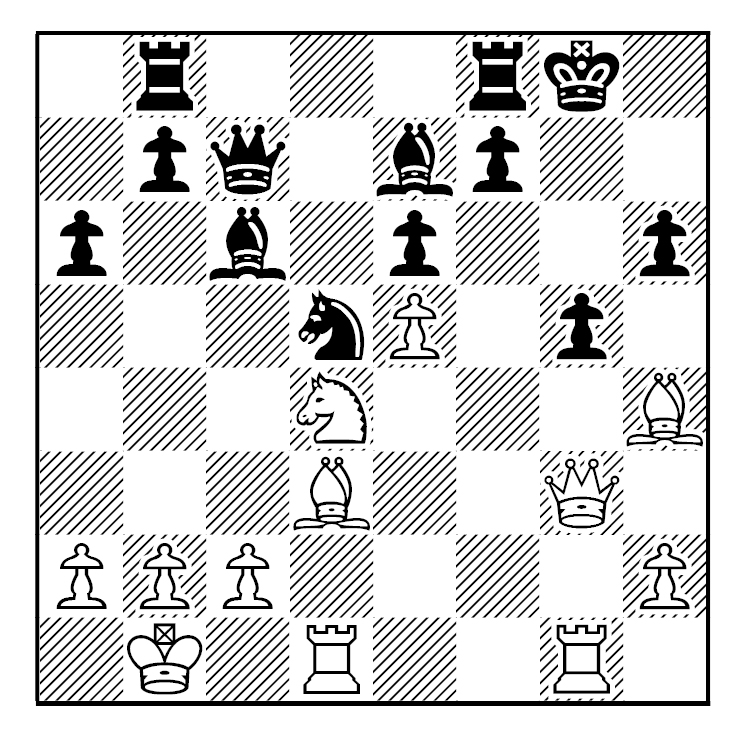
24.Qxg5+!! 1-0 [Because of 24…hxg5 (forced) 25.Rxg5+ Kh8 26.Rh5+ Kg7 27.Rg1#]
New ideas can come from relatively unknown sources. This one is from a 1973 issue of Tennessee Chess News.
Robert Coveyou-Ed Porter
Tennessee, 1973
1.e4 c5 2.Nf3 d6 3.d4 cxd4 4.Nxd4 Nf6 5.Nc3 a6 6.Bg5 e6 7.f4 Be7 8.Qf3 Qc7 9.O-O-O Nbd7 10.Bd3 b5 11.Rhe1 Bb7 12.Qg3 b4 13.Nd5! exd5 14.exd5 Nc5 15.Nf5 O-O 16.Rxe7 Qb6 17.Bxf6 Nxd3+ 18.Kb1 1-0
New ideas can come also come from correspondence games. Here are two of them.
Rott-Daneker
corres., 1971/3
1.e4 c5 2.Nf3 d6 3.d4 cxd4 4.Nxd4 Nf6 5.Nc3 a6 6.Bg5 e6 7.f4 b5 8.e5 dxe5 9.fxe5 Qc7 10.Qe2 Nfd7 11.O-O-O Bb7 12.Qg4 h5 13.Nxe6! Qc6 14.Qe4 Qxe6 15.Qxb7 Qc6 16.Rxd7 1-0
Schuler-Kammel
corres., 1967
1.e4 c5 2.Nf3 d6 3.d4 cxd4 4.Nxd4 Nf6 5.Nc3 a6 6.Bg5 e6 7.f4 b5 8.e5 dxe5 9.fxe5 Qc7 10.Nf3 b4 11.Nb5 axb5 12.exf6 Nd7 13.Bxb5 Ra5 14.Qe2 gxf6 15.Bxf6 Rg8 16.Nd4 Qb6 17.Bxd7+ Bxd7 18.O-O-O Rxa2 19.Kb1? (>19.Nb3) 19…Ra8 20.Nb3 (And now it’s too late!) 20..Qa7 (21.Kc1 Bh6+ 22.Rd2 Qa1+ 23.Nxa1 Rxa1#) 0-1
We’ll stop here and allow you to catch your breath.
Until next time.





